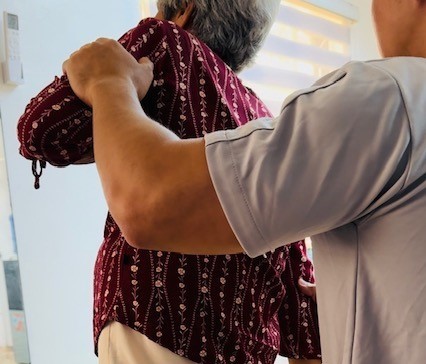
Geriatic Conditions
Physical therapy plays a vital role in addressing various geriatric conditions by focusing on improving mobility, function, balance, and overall quality of life for older adults. Here are examples of how physical therapy can help with geriatric conditions:
1.Fall Prevention:
● Balance Training: Physical therapists design exercises to improve balance, coordination, and stability, reducing the risk of falls.
● Strength Training: Strengthening exercises target key muscle groups to enhance mobility and reduce frailty, making falls less likely.
● Home Safety Assessment: Therapists assess the home environment and provide recommendations to minimize fall
2.Osteoporosis:
● Weight-Bearing Exercises: Activities like walking or resistance training help improve bone density and reduce the risk of fractures.
● Posture Training: Education on proper posture and body mechanics to minimize stress on bones and joints.
● Flexibility Exercises: Stretching routines to maintain joint mobility and reduce stiffness associated with osteoporosis.
3.Arthritis
● Pain Management: Modalities such as heat, cold therapy, or ultrasound help alleviate joint pain and inflammation.
● Range of Motion Exercises: Gentle movements improve joint flexibility and function, reducing stiffness and pain.
● Assistive Device Training: Instruction on using assistive devices like canes or walkers to improve mobility and independence.
4.Stroke Rehabilitation
● Neuromuscular Reeducation: Techniques to improve coordination, movement, and balance affected by stroke-related impairments.
● Strength Training: Exercises to regain strength in weakened muscles and prevent secondary complications.
● Functional Mobility Training: Activities to enhance daily living skills like walking, dressing, and bathing.
5.Parkinson's Disease
● Gait Training: Techniques to address walking difficulties and reduce freezing episodes common in Parkinson's disease.
● Balance Exercises: Specific drills to improve postural stability and prevent falls.
● Lifestyle Modifications: Education on energy conservation and strategies to optimize daily activities.
6.Chronic Pain Management
● Education and Coping Skills: Teaching relaxation techniques, pacing strategies, and cognitive-behavioral approaches to manage pain.
● Activity Modification: Guidance on adapting activities to reduce pain and prevent exacerbation of symptoms.
● Manual Therapy: Hands-on techniques to reduce muscle tension, improve joint mobility, and relieve pain.
7.Cognitive Impairment
● Memory and Attention Training: Exercises to enhance cognitive function and improve attention span.
● Functional Activities: Incorporation of tasks into therapy sessions to promote independence in daily activities.
● Caregiver Education: Providing support and education to caregivers on techniques for managing and facilitating patient participation in therapy.